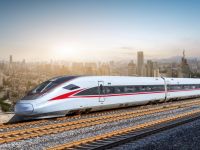Downstream: Algeria has four oil refineries, with combined capacity of 503,000 bbl/d. The 29,000-bbl/d Hassi Messaoud plant supplies products to southern Algeria, as does the smaller 7,000-bbl/d In Amenas plant.
The el-Djazair refinery processes crude from Hassi Messaoud. Finally, the coastal 59,000-bbl/d Arzew refinery, which uses Algerian Saharan blend as feedstock, produces both heavier and light products for domestic consumption and export.
According to the Middle East Economic Digest, Algeria's domestic demand would support a new 150,000 - 200,000 bbl/d refining facility, but the estimated $1.5-billion cost of the planned facility is prohibitively expensive at this time.
Although Algeria has a substantial petrochemical and fertilizer industry, low capacity utilization rates mean continued reliance on imports.
The majority of Algeria's petrochemical plants are located at Annaba (a 550,000-ton- per-year (t/y) - ammonium phosphate fertilizer plant and ammonium nitrate and nitric acid complex), Arzew (365,000 t/y ammonia, 146,000 t/y urea, and 182,500 t/y ammonium nitrate), and Skikda (a 130,000 t/y high-density polyethylene unit, 120,000-t/y ethylene cracker, and a substantial aromatics complex).
Sonatrach has undertaken a number of petrochemical and fertilizer expansion projects, including a new methyl tertiary butyl ether (MTBE) complex and a polyester resin complex.
Algeria has seven coastal terminals for crude oil, refined product, NGL, and liquefied natural gas (LNG) exports. These are located at Algiers, Annaba, Arzew, Bejaia, Oran, Skikda, and La Skhirra.
Arzew handles about 40 percent of Algeria's total hydrocarbon exports (including all of its NGL exports), and Algeria has ambitious plans for the port area.
Among other things, the government would like to build a petrochemicals complex at Arzew, as well as a condensate refinery and desalination plant.
Work also needs to be done to maintain and upgrade Arzew's crude oil loading capacity.
A refurbishment project on the port began in 1998, but has not yet been completed. Besides Arzew, Algeria uses the Tunisian port of La Skhirra exclusively for crude exports.
Natural Gas:
Commercial production of natural gas began in 1961. Algeria has 160 trillion cubic feet (Tcf) of proven natural gas reserves, primarily associated, ranking it in the top 10 worldwide. Sonatrach estimates that Algeria's ultimate gas potential is around 204 Tcf.
According to Sonatrach, natural gas represented 57 percent of Algeria's total proven hydrocarbons reserves in 1998. Algeria accounts for one-quarter of EU gas imports.
Algeria's largest gas field is the super-giant Hassi R'Mel, which initially held proven reserves of about 85 Tcf. Hassi R'Mel accounts for around 1.35 billion cubic feet (Bcf) per day, or about a quarter of Algeria's total dry gas production.
The remainder of Algeria's gas reserves are located in associated and non-associated fields in the southeast, and in non-associated reservoirs in the In Salah region of southern Algeria.
The Rhourde Nouss region holds 13 Tcf of known reserves in the Rhourde Nouss, Rhourde Nouss Sud-Est, Rhourde Adra, Rhourde Chouff, and Rhourde Hamra fields.
Smaller gas reserves are located in the In Salah region (5-10 Tcf) as well as at the Tin Fouye Tabankort (TFT)(5.1 Tcf), Alrar (4.7 Tcf), Ouan Dimeta (1.8 Tcf), and Oued Noumer fields. Four plants at Arzew and Skikda, owned by Sonatrach, liquefy gas for export.
In October 2000, Japan's Itochu won a $352.7-million contract to install three gas compression stations at Hassi R'Mel.
The objective of the project is to extend the life of Hassi R'Mel beyond 2020, and to reverse a decline in reservoir pressure which threatens to decline below minimum operating levels by 2004.
Algeria's natural gas pipeline export capacity of 1.38 Tcf per year includes 988.6 Bcf/y via the 667-mile Trans-Mediterranean (Transmed, renamed Enrico Mattei) line from Hassi R'Mel via Tunisia and Sicily to mainland Italy, and 388 Bcf/y via the 1,013-mile Maghreb-Europe Gas (MEG, renamed Duran Farell) line via Morocco to Cordoba, Spain, where it ties into the Spanish gas transmission network.
Algeria has plans to increase its annual gas export capacity to 3.5 Tcf in coming years.
In October 2000, TotalFinaElf, along with Sonatrach and Spain's Cepsa, agreed to study the feasibility of building a new gas pipeline linking Algeria directly to Europe via Spain.
The line would most likely go from Hassi R'Mel through the port of Arzew to Almeira, Spain.
The European Commission has forecast that Algerian exports will not exceed a 25 percent share of the European gas market through 2020.
In contrast, Europe's two other major gas suppliers, Norway and Russia, are both expected to maintain or expand their 25 percent market shares.
In addition, Algeria has maintained a longstanding policy to develop its gas reserves as a source of domestic energy and as a raw material for the petrochemical industry.
Approximately 95 percent of the country's electricity is generated by gas.
Development of the In Salah region is one of the lynchpins in Algeria's plan to increase its gas exports. In February 2000, BP Amoco and Sonatrach signed a $2.5-billion deal to develop seven of the twelve existing fields in the In Salah region, including the Garat al-Bafinat, Teguentour, Krechta, Reg, In Salah, Hassi Moumeme, and Gour Mahmoud fields.
These fields contain estimated dry gas reserves of 5 Tcf, with a potential for 10 Tcf total. In addition, the joint venture, called In Salah Gas, will appraise existing wells and explore for new gas reserves in the In Salah region. In Salah Gas is the first major gas joint venture between Sonatrach and a foreign partner.
Production from the region is expected to come online in late 2003, after the drilling of up to 200 production wells and construction of a $1-billion, 48-inch pipeline link to Hassi R'Mel.
Under the profit-sharing agreement, project investment is split 65 percent BP, 35 percent Sonatrach with BP funding the estimated $100-million cost of the seismic program and a nine well drilling program that includes five appraisal and four exploration wells.
In May 1997, In Salah Gas sealed its first gas sales deal with Italian electricity generator Enel. The deal enables In Salah Gas to take over an existing contract to supply Enel with 141 Bcf/y of gas.
Sonatrach will continue supplying the Italian power giant with gas supplies until In Salah is ready to start feeding the contract in 2002.
The deal represents In Salah's first step towards achieving its sales goal of 318-388 Bcf/y by early next century. The venture is also marketing gas to potential clients in Europe, Turkey and North Africa.
Besides In Salah, another major Algerian gas and condensates project is Ohanet, located in the Illizi province on the northern edge of the Sahara desert about 60 miles west of the Libyan border.
Ohanet is being developed -- at a cost of $1 billion -- by Australia's BHP (with a 45 percent share), Woodside Petroleum (15 percent), Japan Ohanet Oil and Gas, Swiss-Swedish ABB, and U.S.-based Petrofac.
Production from Ohanet is expected to begin in 2003, and to include gas, gas liquids, and liquefied petroleum gas.
The development project includes construction of a gas processing plant, with capacity of 30,400 bbl/d of condensate, 27,700 bbl/d of LPG, and 665 mmcf/day of natural gas -- as well as a pipeline. BHP is to operate the fields in partnership with Sonatrach.
Following are details of several joint ventures in Algeria's gas sector:
Amoco Corp. announced in June 1998 (before its merger with BP) that it has signed an agreement with Sonatrach to develop gas fields in the In Amenas area of southern Algeria.
The $900-million deal involves numerous wells, pipeline infrastructure and a gas treatment plant that will handle 700 MMcf/day. First gas production from the area is expected in 2002.
Petro-Canada is continuing exploration activities in Algeria after its second natural gas find in early 1998. The well, known as Timellouline Sud-1, tested at daily rates of 117 million cubic feet of gas and 5,820 barrels of condensate.
In 1998, Petro-Canada spent one-half of its $35 million budget for international activities in Algeria. Petro-Canada also has held talks with Sonatrach over development of the Tamadanet gas fields in southeastern Algeria.
Spain's REPSOL (along with Sonatrach and Total Fina Elf) will develop its Tin Fouye Tabankort gas field, with operational startup by the end of 1999. The project is one of three investments in Algeria (the others are an oil field and a petrochemical plant) by the company totaling $540 million over the next five years.
In December 2000, Conoco and Sonatrach signed a Memorandum of Understanding on evaluating the potential for using Algerian gas to fuel power generation projects in Algeria, Spain and Turkey.
Liquefied Natural Gas (LNG) Exports:
With the start-up of the Arzew GL4Z plant in 1964, Algeria became the world's first LNG producer. In recent years, Algeria's competitive position in the LNG business has suffered due to rivalry from Asia and cheaper alternative energy prices.
In fact, Algeria's LNG complexes have been producing below their design capacities due to the growing disadvantage of their higher-cost operations.
Algeria was the second largest exporter of LNG in 1998, with 22 percent of the world's total, exported mainly to Western Europe and the United States.
However, Sonatrach has almost completed a total renovation of its LNG facilities which is expected to raise the country's LNG production capacity to 3.19 Bcf/d.
This refurbishment program focused on the 1-Bcf/d Arzew GL1Z, 1-Bcf/d Arzew GL2Z, and 770-MMmcf/d Skikda GL1K plants.
Also, Algeria's original 260-MMmcf/d Arzew GL4Z, or "Camel," plant, which was slated for decommissioning by 1997, has been refurbished to keep the plant operational for reserve purposes until at least 2003.
Prior to refurbishment, operational capacity of the Camel plant was 163 MMmcf/d, or 62 percent.
In 1999, Algeria exported 841 Bcf of LNG, including 340 Bcf to France, 159 Bcf to Belgium, 137 Bcf to Spain, 118 Bcf to Turkey, 76 Bcf to the United States, and 11 Bcf to Italy. Sonatrach plans to expand its exports, especially to Europe.
Electricity:
Algeria's electricity demand is growing rapidly, and could -- according to Sonelgaz -- 30 billion kilowatthours (BKwh) by 2005, up from 23.2 BKwh in 1999. This likely will require billions of dollars worth of investments in new generating capacity, plus transmission and distribution infrastructure (i.e., lines and sub-stations). In order to accomplish this, Algeria's government hopes to attract foreign capital.
Legislation pending in parliament would end the monopoly over power production held by state-run Sonelgaz and clear the way for Algeria's first independent power projects (IPPs).
According to the Middle East Economic Digest, IPPs totaling $12 billion are planned. These include: 1) a 1,200 MW-Hadjret Ennous plant near Tipasa, scheduled for completion in 2003-4; 2) a 2X600-MW Terga plant near Oran Tipasa, scheduled for completion in 2005-6; and 3) a 2X600-MW Koudiat Draouch plant near Annaba, scheduled for completion in 2003-4.
In the nearer term, the 450-MW Hamma gas turbine plant in Algiers is moving ahead toward commissioning in 2000. The plant was originally planned as a private project, but is instead being funded with "soft" Arab and Islamic financing.
Private financing is also planned for a three-by-100-MW gas turbine unit at Hassi Messaoud.
Sonelgas is expanding the gas distribution network to provide gas as a fuel in industry and homes. Sonelgas plans to invest $15.5 billion during the period 1996-2001 to develop and expand electricity production and distribution through the country.
Algeria has two links to the Moroccan electricity grid and supplies over 550 GWh of electricity to Morocco.
Sonatrach has recently awarded a $107-million contract to Italy's GE Nuovo Pignone to build the country's first privately financed gas-fired power plant at Hassi Berkine.
GE Nuovo Pignone, a subsidiary of General Electric, will also provide a gas treatment system, liquid fuel gas turbine storage and services.
Another Italian firm, Ansaldo Energia, has started work on the Algiers Hamma power station as a turnkey supplier to Sonelgaz. The $226-million project is being financed by various development agencies in the Gulf countries.
Energy Overview:
Energy Minister: Chakib Khelil
Proven Oil Reserves (1/1/01E): 9.2 billion barrels
OPEC Crude Oil Production Quota (2/1/01): 805,000 bbl/d
Oil Production Capacity (2000E): 1.5 million bbl/d
Oil Production (2000E): 1.39 million bbl/d (of which 802,000 bbl/d is crude, 430,000 bbl/d is condensate, and 155,000 bbl/d is NGLs)
Oil Consumption (2000E): 241,000 bbl/d
Net Oil Exports (2000E): 1.15 million bbl/d
Oil Exports to the United States (January-October 2000E): 214,000 bbl/d
Oil Refining Capacity (1/1/01E): 502,665 bbl/d
Natural Gas Reserves (1/1/01E): 159.7 trillion cubic feet (Tcf)
Natural Gas Production (1999E): 2.9 Tcf
Natural Gas Consumption (1999E): 0.8 Tcf
Net Natural Gas Exports (1999E): 2.1 Tcf (of which, 1.2 Tcf was via pipeline and 0.9 Tcf was LNG)
LNG Customers (1999): France, Spain, Turkey, United States, Belgium, Italy
LNG Exports to the United States (1999E): 75.8 billion cubic feet
Natural Gas Pipeline Customers (1999): Italy, Spain, Tunisia, Slovenia, Portugal
Recoverable Coal Reserves (1998E): 44 million short tons (MMST)
Coal Production (1999E): 0.02 MMST
Coal Consumption (1999E): 0.73 MMST
Net Coal Imports (1999E): 0.71 MMST
Electric Generation Capacity (1999E): 6.0 gigawatts (95 percent thermal, 5 percent hydroelectric)
Electricity Generation (1999E): 23.2 billion kilowatthours
Oil and Gas Industies:
Organizations: Enterprise Nationale pour la Recherche, la Production, le Transport, la Transformation et la Commercialisation des Hydrocarbons (Sonatrach) - State-owned company for exploration, transport and marketing of petroleum, natural gas and related products; Enterprise Nationale de Raddinage des Produits Petroliers (Naftec) - Operates and manages all refineries; Enterprise Nationale de Commercialisation et de Distribution des Produits Petroliers (Naftel) - Domestic product distribution. Societe de Conditionnement, Comercialisation & Transport de Gas Industriels (Cogiz) - produces natural gas by-products.
Terminals: Algiers, Annaba, Arzew (LNG)(condensate), Bejaia, Oran, Skikda (LNG), La Skhirra (Tunisia)(crude)
Natural Gas Export Pipelines: TransMed (Hassi R'Mel- Tunisia-Sicily-Italy (Minerbo)), Maghreb-Europe Gas (MEG) (Hassi R'Mel-Morocco-Spain (Cordoba)-Portugal (Leiria)
Crude Oil Refineries (capacity-bbl/d)(2000E): Skikda (351,800), el-Djazair (63,323), Arzew (58,632), Hassi Messaoud (28,910)
LNG Facilities (Design/Refurbished Capacity - billion cubic feet per year) (1997): Arzew GL4Z (54), Arzew GL1Z (429), Arzew GL2Z (341.3), Skikda GL1K (287)
Selected Foreign Energy Company Involvement: Agip, Anadarko, Arco, BP, BHP, Cepsa, Conoco, ENI, Exxon Mobil, Halliburton, Lasmo, Louisiana, Maersk, Neste Oy, Oryx, PetroCanada, Phillips, Ranger, Repsol, Sasol, Samsung, Sun Oil, Talisman, TotalFinaElf, Wintershall, YPF
Seourc: United States Energy Information Administration
© 2001 Mena Report (www.menareport.com)







